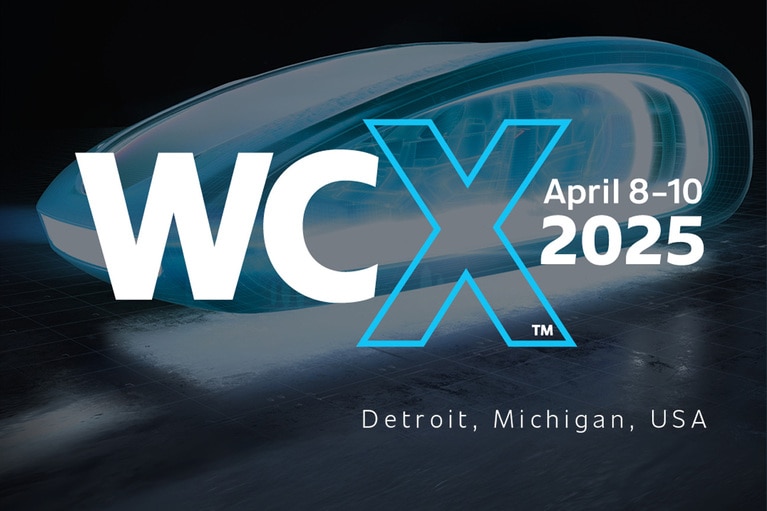
从派克峰到 Bonneville 盐滩,Lightning 的速度超越内燃机摩托车
Lightning Motorcycle 设计的电动摩托车在各个领域都表现出色。了解 Vicor 电源模块如何支持下一代摩托车的详情
通过使用具有行业领先功率密度和创新架构的 DC-DC 转换器电源模块,电源设计师可获得能减轻车辆重量、减少电源系统空间和降低整体成本的解决方案。看看三款全新的车规级产品如何加速电动汽车电源系统设计的未来。
作者:Greg Green,汽车市场营销总监
汽车的电气化给电源系统设计师带来了全新挑战,即以尽可能低的重量实现最高的功率密度,消除车辆续航里程向整体性能的妥协。供电网络(PDN)的设计者还要负责设计安全、高效、重量更轻的系统,同时不影响成本——这是一项非常艰巨的任务。
DC-DC 转换器电源模块具有行业领先功率密度和创新架构,为电源设计人员提供了减轻车辆重量、减少电源系统空间和整体成本的解决方案。完全优化的 PDN 使用 48V 区域架构和高密度电源模块,将节省高达 100 美元的成本,减轻高达 25 公斤的重量。
图 1:在整个车辆中用电源模块取代传统的分立式电源转换,可以显著节省电动汽车的成本和重量。
与定制、接地、分立式电源设计相比,电源模块可以解锁重要的全新电源系统设计,实现快速创新。三款新的汽车级 Vicor DC-DC 电源模块可以实现跨平台跨应用的快速功率扩展和更快的电源系统设计,为车辆团队提供灵活、可扩展和可重复使用的解决方案。BCM6135、DCM3735 和 PRM3735 利用了 Vicor 在功率密度和高效功率转换方面的悠久传统和领先地位。同样重要的是,它们紧凑的尺寸和轻便的重量使其成为汽车的绝佳选择。
这三款模块可以组合成 300 多种 PDN 配置,以支持整个车辆的子系统。这三款产品可用于在 2 至 20kW 的功率水平下将 800V 电源转换为 48V 或 12V,几乎满足所有高压电源转换需求。它们特别适合支持向 48V 和 48V 区域架构的过渡。此外,利用其双向功能,这些模块能够更好地支持再生电力负载,因为它们能够以汽车行业中最快的电流转换速率改变电流。该产品线已通过 APQP 流程开发并获得汽车使用认证,并将在未来 12 个月内推出新的高性能汽车装配线。
图 2:Vicor BCM6135、DMC3735 和 PRM3735 电源模块为汽车行业的功率密度设定了新的标准。它们共同解决了 xEV 电源系统的 800V、400V、48V 和 12V 系统的复杂转换挑战。
Vicor 电源模块支持具有并联阵列功能的模块化扩展,并且非常小,可以用于各种应用。这些部件是当今电动汽车电气化和创新的基石。
BCM6135 是一个 2.5kW 的隔离 BCM® 母线转换器,在 61×35×7.3mm 的封装中将 800V 转换为 48V。它提供了业界领先的 158kW/l 的功率密度。除了功率密度外,BCM6135 的电流转换速率(di/dt)为 8MA/s。这种性能是由 Vicor 正弦振幅转换器™ 拓扑和 ZVS/ZCS(零电压/零电流)开关控制系统实现的。
DCM3735 2.0kW DCM™ DC-DC 转换器将未经稳压的 48V 输入转换为稳压的 12V 电源。DCM3735 具有与各种汽车应用兼容的宽输入范围。输出可在 8-16V 范围内调节,功率密度为 300kW/l,支持高压 BCM 的下游转换和稳压。
PRM3735 是一款适用于 48V 电源的 2.5kW PRM™ 稳压器。PRM3735 可提供稳压,效率高达 99.2%。它占用面积小,功率密度为 260kW/l,有助于释放封装空间,从而减小整体 DC-DC 电源的尺寸。
这些新模块可帮助 OEM 实现重要的电动汽车动力系统设计目标:
对于电源工程师来说,这三款新的汽车模块就像一把瑞士军刀。它们可以单独使用或组合使用,以简化设计过程,并生产出更高效、更轻重量的系统。那么,当前的电源模块是如何使用的呢?
如今,汽车一级供应商宏发正在与 Vicor 合作开发 800V-48V DC-DC 转换器,以支持主动悬架系统。主动悬架利用 48V 的供电,因为该应用的电力需求超过了 12V 的供电能力。此外,当将 800V 或 400V 布线到车辆上多点时,存在许多安全问题。主动悬架系统将利用 BCM6135 功率密度实现 1.8l 以下的系统箱体积。该应用还利用 BCM6135 的高转换速率实现再生电力负载,这些负载需要即时电流反向将电力传递回电池。
随着当今电动汽车中高压主电池的出现,如果有一种方法可以提供强大的瞬态性能,下游电池则可以是一次性的。BCM6135 业界领先的转换速率为替换 48V 电池提供了机会,BCM6135 在 xEV 车辆中充当虚拟 48V 电池,从而节省了成本和重量。由于 BCM6135 能以 8.0MA/s 的转换速率从零电流步进到全电流,因此它可以将牵引电池的 800V 降压到 48V,并为负载供电,就像从 48V 辅助电池中获取电力一样快。没有其他 DC-DC 转换器可以与此速度相匹配,使客户能够在降低车辆成本的同时将车辆重量减轻 10 公斤。
48V 的发展趋势强劲,采用 48V 成为必然选项。新的电源模块可以很轻松地配置,使这种转换更容易。DCM3735 与 BCM3735 结合使用,可在 BCM6135 48V 输出上创建稳定的 12V 电源。
由于 60 多年来 12V 一直是行业默认电源,因此车辆中仍有许多负载是为 12V 电源设计的。这些 12V 设备成本低,最重要的是可靠性已经得到长期的证明。由于车辆同时需要 12V 和 48V 电源,向 48V 的过渡受到了阻碍。DCM3735 可以与 BCM6135 组装在一个普通的 PCB 上,以创建一个紧凑的 DC-DC 转换器,也可以作为 48V 区域架构的一部分进行部署。
当用作 48V 区域架构的一部分时,DCM3735 可以远程安装,在车辆上创建本地 12V 电源。这种应用方法让 PDN 设计者可有效地支持 12V 负载,同时实现了向 48V 母线过渡时节省高达 90% 的成本和重量。图 3:BCM6135 与 48V 相结合可提供最佳性能,并减小电源系统的尺寸和重量。鉴于 BCM6135 的高转换速率和高效率,该系统可以实现与直接电缆几乎相同的再生电力双向传输,而不需要依赖辅助电池或高压电缆。
汽车电气化是汽车行业有史以来面临的最具挑战性的设计问题之一。增加电池和电子设备会使车辆重量增加,影响续航里程和性能。采用高密度电源模块进行设计是处理高压转换和应对重型电子设备影响的完美解决方案。
Vicor 凭借其行业领先的功率密度,简化了电源工程师的工作,并帮助稳定未来的 xEV 平台,只需使用三个电源模块:BCM1635、DCM3735 和 PRM3735。这些紧凑型产品使 PDN 设计者能够缩小 DC-DC 电源转换所需的硬件尺寸,利用较小的系统集成到电池或其他电源管理箱中,并减轻冷却系统的重量。Vicor 模块不仅为开拓创新打开了大门,也节省了最终的成本和重量。这三个模块为降本减重奠定了基础,成本可下降 100 美元,车辆重量减轻 25kg。
本文最初由 Power Systems Design 发布。
Greg Green 现任 Vicor 公司汽车客户项目总监。他在汽车行业拥有超过 33 年的丰富经验,涉及 OEM 厂商和一级供应商的制造、设计工程和产品线管理。Greg 丰富的汽车产业经验包括制造、产品开发和业务开发等。Greg 先后毕业于密歇根大学和凯特林大学,分别获航空航天工程学士学位和制造管理硕士学位。
Greg Green,汽车营销市场经理
从派克峰到 Bonneville 盐滩,Lightning 的速度超越内燃机摩托车
Lightning Motorcycle 设计的电动摩托车在各个领域都表现出色。了解 Vicor 电源模块如何支持下一代摩托车的详情
Automotive Engineering Exposition online 2025
Vicor to present the benefits of 48V power distribution and highly efficient power distribution networks with zonal architecture
Vicor 将在2025 EEHE 大会发表混合动力和纯电动汽车电子技术演讲
高功率密度 DC-DC 转换器模块和正弦振幅转换器可实现顶级的系统性能和小型化,以满足最具挑战性的用电情况
Vicor 展示了电动汽车高压转换至 SELV 的创新方案
高密度模块缩小了供电网络,提高效率以及改善整体性能







